Medical expert of the article
New publications
Preparations
Ointment for seborrheic dermatitis
Last reviewed: 03.07.2025

All iLive content is medically reviewed or fact checked to ensure as much factual accuracy as possible.
We have strict sourcing guidelines and only link to reputable media sites, academic research institutions and, whenever possible, medically peer reviewed studies. Note that the numbers in parentheses ([1], [2], etc.) are clickable links to these studies.
If you feel that any of our content is inaccurate, out-of-date, or otherwise questionable, please select it and press Ctrl + Enter.
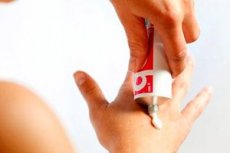
Seborrheic dermatitis is a chronic dermatological disease and manifests itself in the form of scaly patches, red skin and stubborn dandruff. Most often, pathological lesions are located on the face, upper chest and back.
Seborrheic dermatitis does not affect your overall health. It is not contagious and is not a sign of poor personal hygiene.
Ointment for seborrheic dermatitis should be prescribed by a professional: dermatologist, gynecologist, endocrinologist.
Indications for use
The main signs of seborrheic dermatitis depend on where exactly the inflammatory process is localized and what type it is. With seborrhea of the scalp, dandruff may appear. At the same time, hair falls out heavily. Seborrheic dermatitis on the skin of the body manifests itself in the appearance of red plaques and pink papules, which over time become covered with scales
The foci of the disease can spread throughout the body. When a huge number of affected areas appear on the patient's skin, he feels discomfort, pain and itching.
If you notice the symptoms described above, you should immediately contact a specialist who will prescribe you an effective ointment for seborrheic dermatitis.
Pharmacodynamics
We will consider the pharmacodynamics of ointments for seborrheic dermatitis using the popular product "Apilak" as an example.
Apilak, or royal jelly, is a secretion produced by the allotrophic glands of worker bees. It contains many vitamins, microelements, amino acids, and other essential biologically active substances. Due to this, the ointment has a good tonic effect and helps stimulate cellular metabolism.
Pharmacokinetics
We will consider the pharmacokinetics of ointments for seborrheic dermatitis using the popular drug "Baneocin" as an example.
The active ingredients of this ointment are not absorbed even in damaged skin. But there is quite a large amount of them on its surface. If you plan to apply the drug to large areas of the body, pay attention to the possibility of systemic absorption of its substances.
It is characterized by good tissue tolerance.
Names of ointments for seborrheic dermatitis
Today in pharmacies you can see many different names of ointments for seborrheic dermatitis. Therefore, the choice sometimes becomes too difficult. Let's consider the most effective and popular drugs:
Apilak. This is a biogenic stimulant with a general strengthening effect. The drug got its name from the active substance apilak. This is lyophilized royal jelly, which is produced by worker bees. It has a strong antispasmodic, tonic and trophic effect. Additionally, the product contains various vitamins (group B, C, H), folic acid, mineral elements.
The ointment is actively used in the treatment of seborrheic dermatitis and other dermatological diseases of the skin. For a positive result, you need to apply a thin layer of ointment to the skin affected by seborrheic dermatitis. Repeat twice a day. The duration of the course is individual and depends on the severity of the disease. Therapy can last two weeks or even a month.
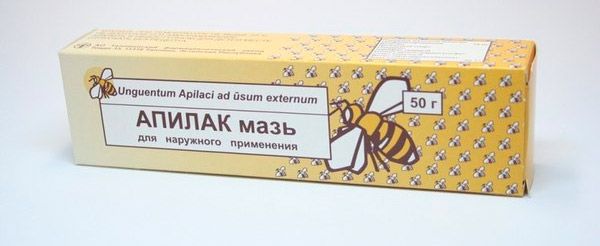
The drug is contraindicated for patients with:
- Addison's disease.
- individual intolerance to the main substance.
Side effects include: allergic reactions, insomnia, dry mouth, increased heart rate.
Baneocin. The active ingredients of the drug are bacitracin and neomycin. The drug is combined with a well-defined antibacterial effect.
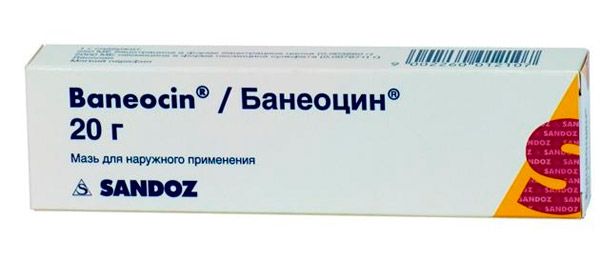
It should be applied in small amounts two to three times a day. A bandage can be used. It is not recommended for pregnant women and women who breastfeed. It cannot be used by patients with extensive skin lesions, with moderate to severe kidney disease, if a person has an individual intolerance to bacitracin and neomycin.
Side effects from use are rare, among them the following are particularly notable: allergies, contact eczema, nephrotoxic effect.
Betnovat. The active substance is betamethasone, which is present in this drug in the form of a complex ester (valerate). Due to this, this ointment helps to relieve inflammation and reduce signs of swelling. It is actively used to improve the general condition of patients with seborrheic dermatitis.
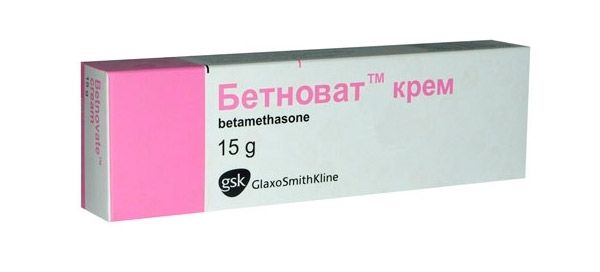
Apply a thin layer of ointment to the affected areas of the skin two or three times a day. The therapy continues until the patient's condition improves noticeably. Later, you can switch to a maintenance dose (once a day).
Long-term use of the drug sometimes leads to reactive action. Some patients indicate that the drug leads to atrophy of the skin. Contraindications for use are: rosacea, acne, primary skin infections that were caused by viruses, perioral dermatitis, intolerance to betamethasone.
Zinc ointment
According to the instructions, zinc ointment is prescribed for diaper rash and diaper dermatitis. But today many use it to treat seborrheic dermatitis. The main component of the drug is zinc oxide. It has excellent antioxidant properties, relieves inflammation, and heals the skin.
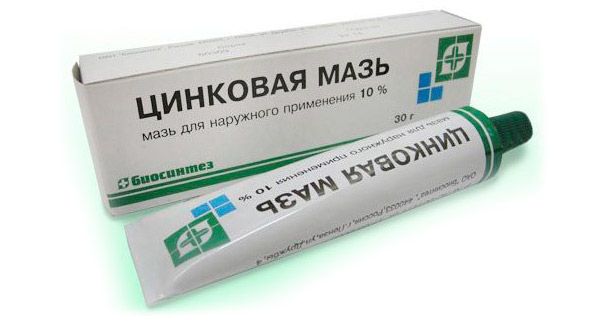
Zinc ointment for seborrheic dermatitis is used to reduce the intensity of skin peeling. It should be applied in small quantities only to the affected areas of the skin. The procedure should be repeated up to three times a day. After just a few applications of the ointment, the patient feels a significant improvement in the condition, itching stops and discomfort goes away. The only contraindication to use is individual intolerance to the components of the ointment.
Clotrimazole ointment
Since seborrheic dermatitis often occurs due to the activation of opportunistic microorganisms on the skin, in particular Malassezia fungi, antifungal drugs are very popular in the treatment of this disease. Clotrimazole ointment helps stop the proliferation of fungi and eliminate the main cause of the disease.

Also in this case you can use the following drugs:
- Fluconazole.
- Ketoconazole.
- Itraconazole.
Ointment for seborrheic dermatitis on the face
When treating seborrheic dermatitis on the skin of the face, it is necessary to use complex therapy. First of all, it is necessary to eliminate the cause that caused the disease, normalize your diet, and properly care for your face. The main medicinal ointments that are used to treat seborrheic dermatitis on the face are:
Bifasam. An antifungal drug whose active ingredient is bifonazole, an imidazole derivative.
The dosage of the ointment is strictly individual. The doctor pays attention to the degree of the disease and the type of seborrheic dermatitis. Bifasam cannot be used in the first months of pregnancy and in case of bifonazole intolerance. Side effects are extremely rare. Among them are: allergic reactions, burning, redness, tingling, maceration, peeling.
Elokom. Hormonal ointment, the active ingredient of which is mometasone furoate. During treatment, it is necessary to apply, lightly rubbing, into the skin that was affected by the disease. The duration of therapy is individual, usually the drug is used until the symptoms disappear.

If the patient is also diagnosed with rosacea, bacterial, viral or fungal infection, syphilis, tuberculosis, sensitivity to mometasone furoate, the drug cannot be used. The same applies to pregnancy and childhood. Side effects from use: secondary infection, folliculitis, dry skin, irritation, itching, redness, acne, paresthesia.
Elidel. An effective immunostimulant. Relieves signs of inflammation. The active ingredient of the ointment is pimecrolimus. Apply twice a day in a thin and even layer to the skin affected by seborrheic dermatitis. Use until the main symptoms of the disease completely disappear.
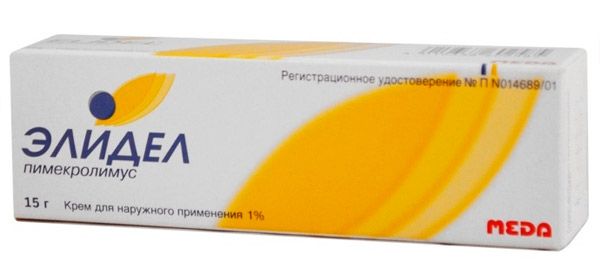
During pregnancy, the drug is used with caution, under the supervision of a specialist. The ointment is contraindicated for children under three months, those sick with viral, fungal or bacterial skin infections, with individual intolerance to the components. Side effects include: burning, itching, allergic reactions, dermatitis, simple herpes, suppuration, furuncles, papillomas, pain, rash, pigmentation on the skin.
Ointment for seborrheic dermatitis on the head
For seborrheic dermatitis of the scalp, various special shampoos are most often used, but in some cases, doctors prescribe hormonal ointments to achieve an effective result:
Dermovate. The active ingredient of this drug is clobetasol. It is a glucocorticosteroid for local use, which helps reduce the symptoms of inflammation, itching, allergic reactions.
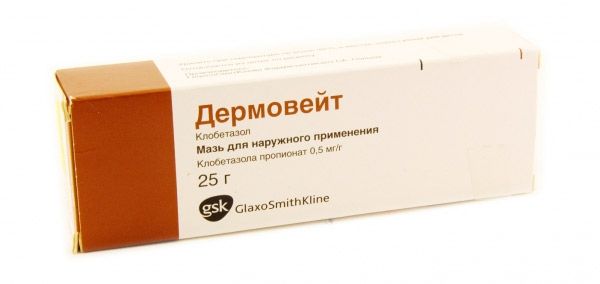
Apply the product once or twice a day in small amounts to the affected areas of the skin. The therapy cannot last longer than four weeks. For the treatment of chronic diseases, repeated short courses of Dermovate may be prescribed.
The drug is contraindicated in basal cell skin cancer, rosacea and acne vulgaris, Hyde's nodular prurigo, perioral dermatitis, psoriasis, children under one year of age, during pregnancy and lactation, as well as in case of hypersensitivity to its components. Side effects may include the following: suppression of pituitary function, appearance of striae, pustular psoriasis.
Delor. The active ingredient of the drug is clobetasol propionate. It helps relieve inflammation and itching, as well as reduce collagen synthesis.
Apply a small amount of ointment to the affected skin areas once or twice a day. The duration of therapy depends on how quickly clinical improvement occurs. It is not recommended to use for more than four weeks.
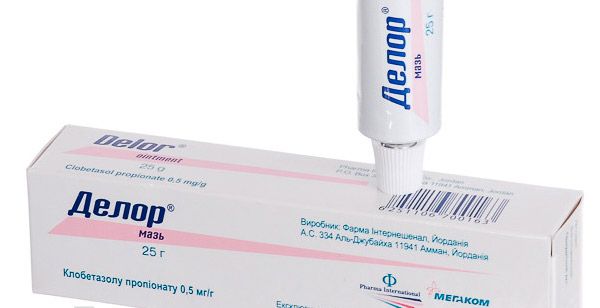
The drug is contraindicated in cases of rosacea, acne, viral skin lesions, individual intolerance to the components of the drug, children under one year of age, pregnant women and during lactation. Side effects include: itching, erythema, rash, urticaria, burning, dilation of the surface of blood vessels, skin atrophy, pigmentation, hypertrichosis.
Method of administration and dosage
The dosage of any medications should be under the supervision of a doctor, especially when it comes to hormonal ointments (Dermovate, Delor). The average dose is a small amount of the drug one to three times a day. The duration of treatment depends on the individual characteristics of the body, the degree of the disease and the extent of the affected areas of the skin.
Using Seborrheic Dermatitis Ointments During Pregnancy
Pregnant women are prescribed ointments for seborrheic dermatitis only when the expected benefit from their use outweighs the possible risk to the fetus.
But this does not mean that treatment is not necessary. Seborrheic dermatitis is dangerous because it can lead to its appearance in a child after birth.
Side effects
As a rule, after using ointments for seborrheic dermatitis, the following side effects may occur:
- Allergic reactions (only after long-term therapy): dry skin, redness, itching, rash. They are very rare and resemble contact eczema.
- If the skin lesion is quite extensive, the drugs can be absorbed into the body and lead to nephrotoxic effects.
Interactions with other drugs
If seborrheic dermatitis has affected large areas of the skin, ointments and cephalosporins with aminoglycoside antibiotics should not be taken at the same time, as this can increase intoxication. The same applies to furosemide and ethacrynic acid.
Storage conditions
Ointments for seborrheic dermatitis should be stored in a cool, dark place out of the reach of children (at a temperature not exceeding 25 degrees).
Best before date
As a rule, such drugs have a shelf life of up to three years. You can always look it up on the ointment packaging or in the attached instructions.
Attention!
To simplify the perception of information, this instruction for use of the drug "Ointment for seborrheic dermatitis" translated and presented in a special form on the basis of the official instructions for medical use of the drug. Before use read the annotation that came directly to medicines.
Description provided for informational purposes and is not a guide to self-healing. The need for this drug, the purpose of the treatment regimen, methods and dose of the drug is determined solely by the attending physician. Self-medication is dangerous for your health.


 [
[